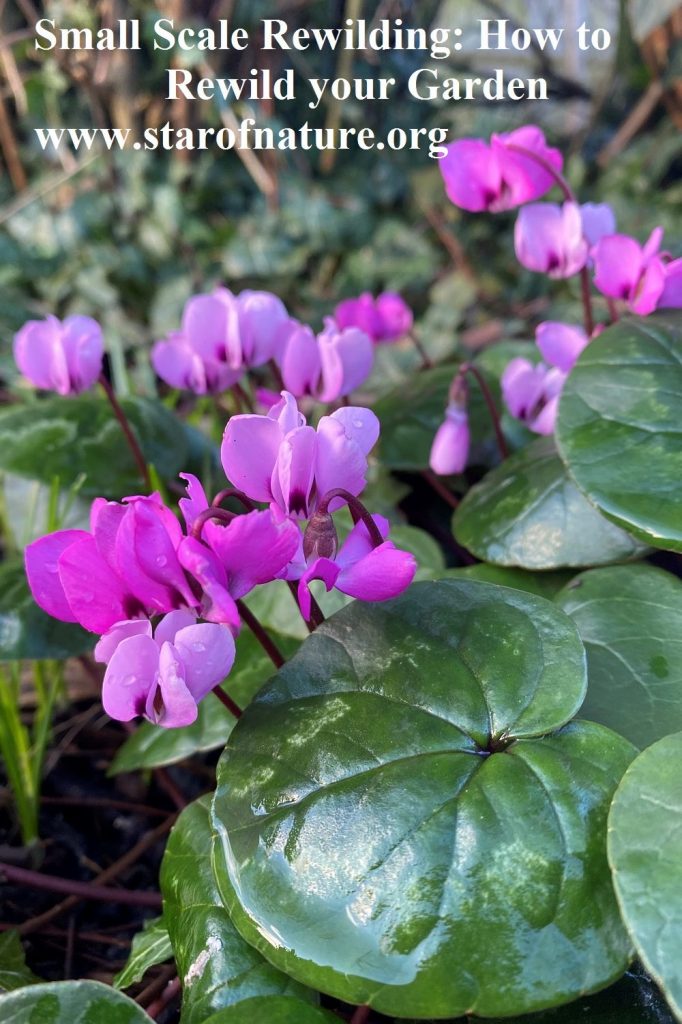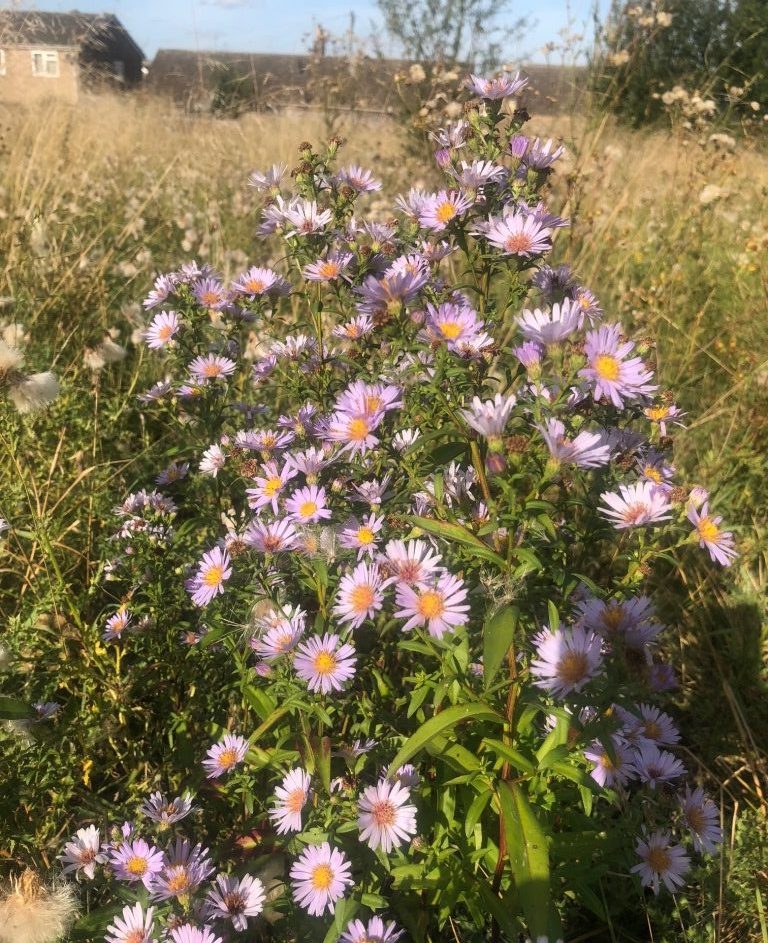Small Scale Rewilding: How to Rewild your Garden
Rewilding is a relatively new concept of conservation and land management. It is also increasingly seen as one of the principles of sustainable living. But is rewilding a good idea? How much land do you need for rewilding? And can it be done in a small garden? In this post I answer these questions, and make practical suggestions on how to do small scale rewilding and how to rewild your garden whatever its size.
Is rewilding a good idea?
Rewilding requires abandoning intensive methods and the use of chemicals in gardening. As a result you grow organic vegetables, flowers, and fruit.
Other advantages include cleaner soil and water, and the absence of poisonous fumes from pesticides, fungicides and herbicides. You also no longer need to worry about the dangers from chemicals to the health of those using the garden, particularly children and pets.
Letting nature to flourish brings a sense of harmony and joy from the contact with other living beings. It also makes gardening easier, both physically and financially. And it does not matter how big is the garden. Rewilding can work on any scale.
Two principles of small scale rewilding
There are many misconceptions about small scale rewilding. Some think that it is about abandoning gardening altogether. But it does not have to be this. It is not incompatible with design, beauty, comfort, and growing flowers, vegetables and fruit. It is also not about nettles and thistles, or deer and foxes in your garden. Not initially at least. In fact rewilding starts with the smallest creatures in your garden.
1. The first most important principle of small scale rewilding is rewilding the soil. You need to ensure that its inhabitants thrive and multiply. This includes earthworms, various insects and microorganisms. Rewilding therefore means abandoning chemicals and going organic.
2. The second important principle is letting natural processes to occur. It is about limiting interference, letting nature to take control, and abandoning ‘humans know best’ philosophy.
A garden is a complex natural system and such systems are capable of regulating themselves.
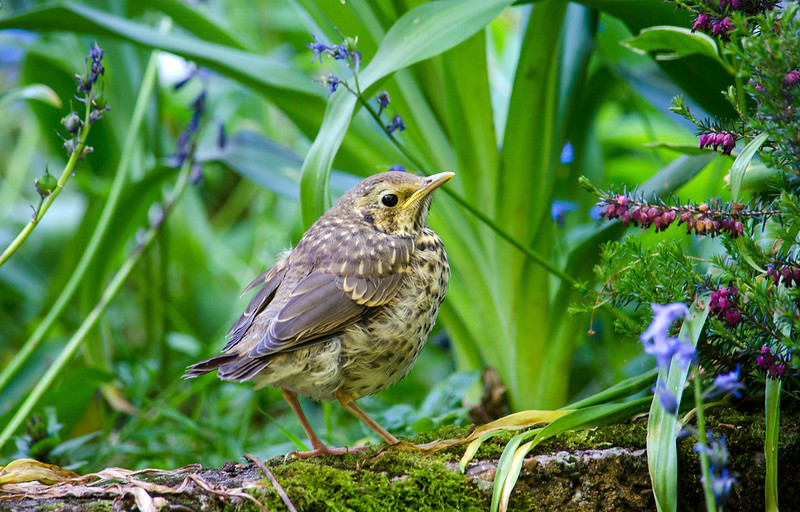
Rewilding the soil
To rewild the soil, it is essential to use techniques of organic gardening that I describe below.
Natural soil conditioners
Instead of chemical fertilizers use natural soil conditioners, including seaweed, manure, compost, wood ash, green manure, wood chippings, bark, leaf mold and other.
The only situation where fertilizers other than natural soil conditioners are needed is potted plants. Even if they are annual and grow only for 2-3 months, they still run out of nutrients. One therefore has to use a fertilizer, but make sure that it is natural and organic, such as a fermented seaweed liquid.
Biological pest control
Instead of chemical pesticides use natural biological pest control. This means attracting birds, insects and animals, such as frogs and hedgehogs, that are enemies of garden pests.
In spring leaf eating insects appear ready to take advantage of tender young plants. But this attracts their predators. In nature there is a close relationship between these two groups: their numbers increase and decline together. In a well maintained natural garden a balance between them will be also quickly achieved.
It takes time, however, for a balanced eco-system to get established. But in the meanwhile it is OK to get some help from science that supports organic gardening. In my experience, for example, nematodes are very effective against slugs and require little effort. One application in early spring protects for the entire spring and early summer.
Another useful technique is complementary planting. Leaf-eating insects dislike the smell of tansy, marigolds (tagetes) and calendula. Marigolds and calendula can be planted side by side with vegetables, and tansy near the garden’s boundary.
Yet another protective technique is avoiding any monoculture and mixing different crops. For example, a row of blackcurrants could alternate with a row of raspberries. And carrots can be planted next to chives because the strong smell of chives deters carrot root fly.
Natural disease control
Instead of fungicides use natural methods to control disease, including crop rotation and a correct choice of plants. This means prioritizing disease resistant and local varieties of vegetables, flowers and trees. And of course a vegetable garden can included wild salad leaves and herbs that are very easy to grow organically.
Generally, diseases and pests attack weak plants. It is often a signal that a plant has not been given the right conditions.
Natural weed control
Finally avoid using chemical herbicides to control weeds. Instead use mulch and no dig method described below.
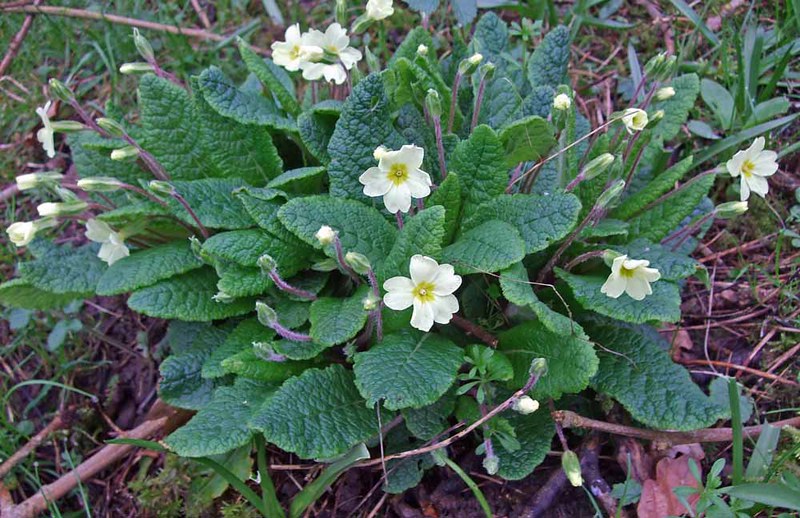
Organic mulch in small scale rewilding
In the wild nothing is wasted. Dying plants become a medium from which new growth emerges in spring. And so a wood floor is always covered with mulch in the form of decaying leaves and branches.
Therefore avoid as much as possible throwing out your garden waste, including autumn leaves, spent crops and cuttings. If it comes from your garden, it ideally should go back into the soil to maintain its fertility.
If you harvest from your garden, you need to feed the soil with additional organic material. For example, vegetable waste from the kitchen is great.
Of course ideally one needs a shredder. It makes possible to use larger pruned branches and turns them into decorative-looking mulch. But if you don’t have it, using most of garden waste is already a big step.
Mulch solves many problems:
- It keeps moisture in the soil.
- It acts as a fertilizer.
- In addition it provides food for earthworms that improve the structure of the soil, make it more penetrable for water and air, and enrich it with nutrients.
- And mulch also suppresses weeds.
Organic mulch as a fertilizer
It is particularly important to understand why mulch is a fertilizer. This is because plants receive most of their food from the air and not from the soil.
In order to grow plants need photosynthesis. But all that it requires is sunlight, water and carbon dioxide (CO2). Therefore the food that plants absorb from their environment is 80% carbon dioxide from the air and only 20% mineral substances from the soil.
Carbon dioxide is released when organic materials, such as dead leaves, are decomposed. Decomposing vegetable waste also provides food for earthworms and is taken by them into the deeper layers of soil.
Ideally, therefore, these processes should be happening where plants grow and not in the compost bin. However, one needs to take into account individual conditions. Kitchen waste can attract mice and fresh grass cuttings can attract slugs, particularly before the plants are fully established.
So it may be better to use both compost from the bin (partly decomposed organic material) and mulch made from fresh garden waste (weeds and grass cuttings, for example).
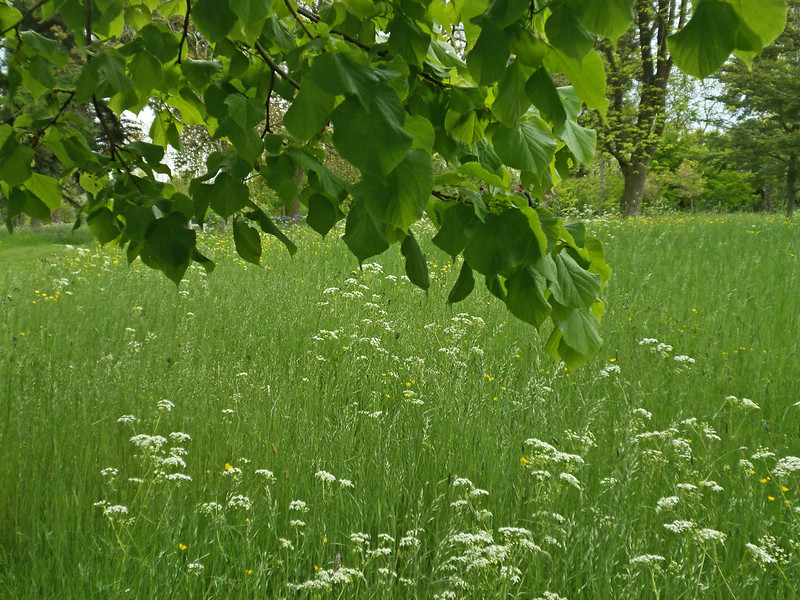
No dig method
Digging is traditionally done in spring and autumn. It is very hard work, but is it really necessary? Its equivalents in the wild are earthworms and the hooves of large animals, such as deer, that disturb only the surface of the soil.
Problems of digging
The problem with digging is that it kills organisms that inhabit the soil. This includes earth worms whose habitat is destroyed. It also includes soil microorganisms that that have a symbiotic, mutually beneficial relationship with plants.
Microorganisms transform organic matter into nutrients that are assimilated by plants. They also produce chemical substances that accelerate plant grown and increase plants’ immunity to disease.
Soil bacteria and other microorganisms, however, are highly specialized creatures, sensitive to changes in their environment. Those that live in deeper layers of the soil are killed through exposure to sun and air. Those that live in the upper layers are killed by being moved deeper and deprived of oxygen. But all this is inevitable with digging.
Another problem with digging is that the soil is absolutely full of seeds of various plants. This including weeds – fast growing competitive plants that easily colonize new areas. Digging brings the seeds closer to the surface creating conditions for growth. The result of this is a constant drudgery of weeding.
No dig gardening
But it is possible to break this cycle. When making a new vegetable bed, cover the area with cardborad to exclude light. After 4-8 week it will kill all plants.
Don’t dig, but cover the area with at least 5cm of compost and plant into it. Leave cardboard on paths between the beds and cover it with bark chippings. It will suppress weeds, provide more nutrients as bark decomposes, and help to conserve moisture.
Subsequently put 5cm of compost on beds every year before planting and add bark chipping to paths.
And to clarify: no dig method does not mean that you cannot disturb the soil at all. You can, but it is recommended not to work it deeper than 5-7 cm.
How to rewild a lawn
This is another essential of small scale rewilding. Turning at least a part of your lawn into a meadow will have a beneficial effect on the entire garden.
This is what I discovered when I stopped mowing my lawn. Paths with short grass naturally formed where we walked. Wild flowers, such as clover, selfheal, buttercups and (edible!) dandelions and ox-eye daisies appeared naturally. The number of bees and butterflies visibly increased. And for the first time I could hear a lovely sound of crickets in the grass.
In addition less watering was needed in spite of a very hot summer. And in spring I noticed that snowdrops, that I previously struggled to establish, appeared in new areas of the garden. And of course I also enjoyed not having to mow the lawn every week.
A meadow style lawn can be cut 1-3 times a year. It is important not to do it too early, to allow plants to produce seed. Generally, mowing less and later, and using a mower on a higher setting is better for rewilding. It preserves the insects’ habitat.
Read more about turning a lawn into a meadow in How to Grow Wild Flowers in the Garden.
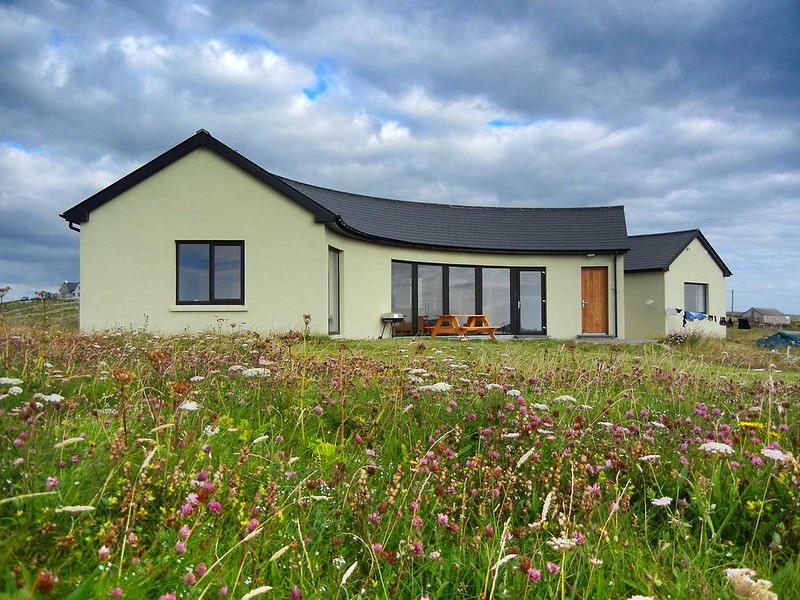
Doing less and trusting nature
A gardening expert once said that the best tool for natural gardening is handcuffs. You put them on yourself to stop yourself interfering and ruining nature’s work. How true!
This is absolutely crucial for the philosophy and method of rewilding – it is about letting nature do the work. That this is the quickest and most efficient way of restoring land has been repeatedly proven through experience. There is a wealth of evidence in ‘Wilding’ by Isabella Tree, a description of a pioneering rewilding project at Knepp estate in Britain (the link is to my review).
You need patience to let the ecosystem of the garden to regain balance and solve its own problems. Our desire to do everything as quickly as possible ruins it all. This is very obvious in the use of chemicals that bring only temporary results and at a very high cost. But human efforts to help plants organically also often deal with consequences, rather than underlying problems.
And problems tend to disappear when natural balance is restored. So it is important to do less tiding, digging and mowing. This in turn will reduce the need for watering, weeding, pest and disease control and soil improvement.
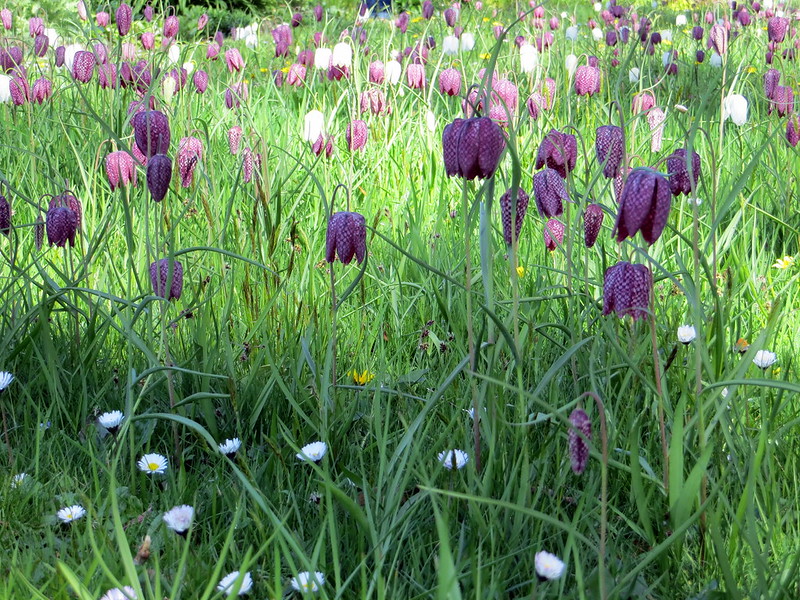
Other small scale rewilding tasks
1. Plant some nectar and pollen rich wild flowers. There are many ways of using them in the garden, see my post How to Grow Wild Flowers in the Garden. See also Nectar: Basics for a Bee-Lover and Pollen: Basics for a Bee-Lover.
2. Introduce yellow rattle into your rewilded lawn. It is a beautiful, semi-parasitic wild flower that makes grass less vigorous. It is used by conservationists to help wild flowers to compete against grass and to increase biodiversity.
Yellow rattle seeds need to be sown while they are fresh in July and August as they ripen. It is common and grows in meadows, including many parks and natural style gardens. It is therefore not difficult to collect the seeds if you know what the plant looks like (see How to Grow Wild Flowers in the Garden.). Alternatively, buy the seeds from wild flower nurseries. Scatter the seeds in the grass straight away.
3. Put up bird boxes, bat boxes, insect houses, bumble bee houses, hedgehog houses, a conservation hive for wild bees and more. It may take time, but they will come.
They will come and may start behaving badly. Our hooligan woodpecker, for example, does not understand conservation and loves to take the bug hotel apart. But I don’t mind.
4. Don’t collect dead leaves in autumn and leave dead stems on flower beds until late winter or early spring. It is natural mulch and helps insects to overwinter. Seed heads are also food for birds.
5. Create a pond if possible – it greatly increases biodiversity.
6. Sow green manures in autumn as soon as vegetable crops have been cleared away and leave them until spring. It improves the soil and prevents erosion.
Posts related to ‘Small Scale Rewilding: How to Rewild your Garden’
How to Grow Wild Flowers in the Garden
Best wild flowers to grow in the garden
Best Wild Flowers for Bees and Butterflies
Medicinal Wild Flowers for your Garden
‘Wilding’ by Isabella Tree: a Review
How to Attract Sparrows to your Garden
What is Nectar: Basics for a Bee-Lover
Organic Pest Control: Sanctuaries for Beneficial Insects
The Benefits of Stinging Nettle: What is it Good for?
Four Types of Organic Plant-based Fertilizers
Image credits: young thrush by Alison Day, wild primrose by Simon, Morton Hall gardens by Amanda Slater, wild flower garden by Roger Ward, snake’s head fritillaries by Becks.
Pin ‘Small Scale Rewilding: How to Rewild your Garden’ for later
